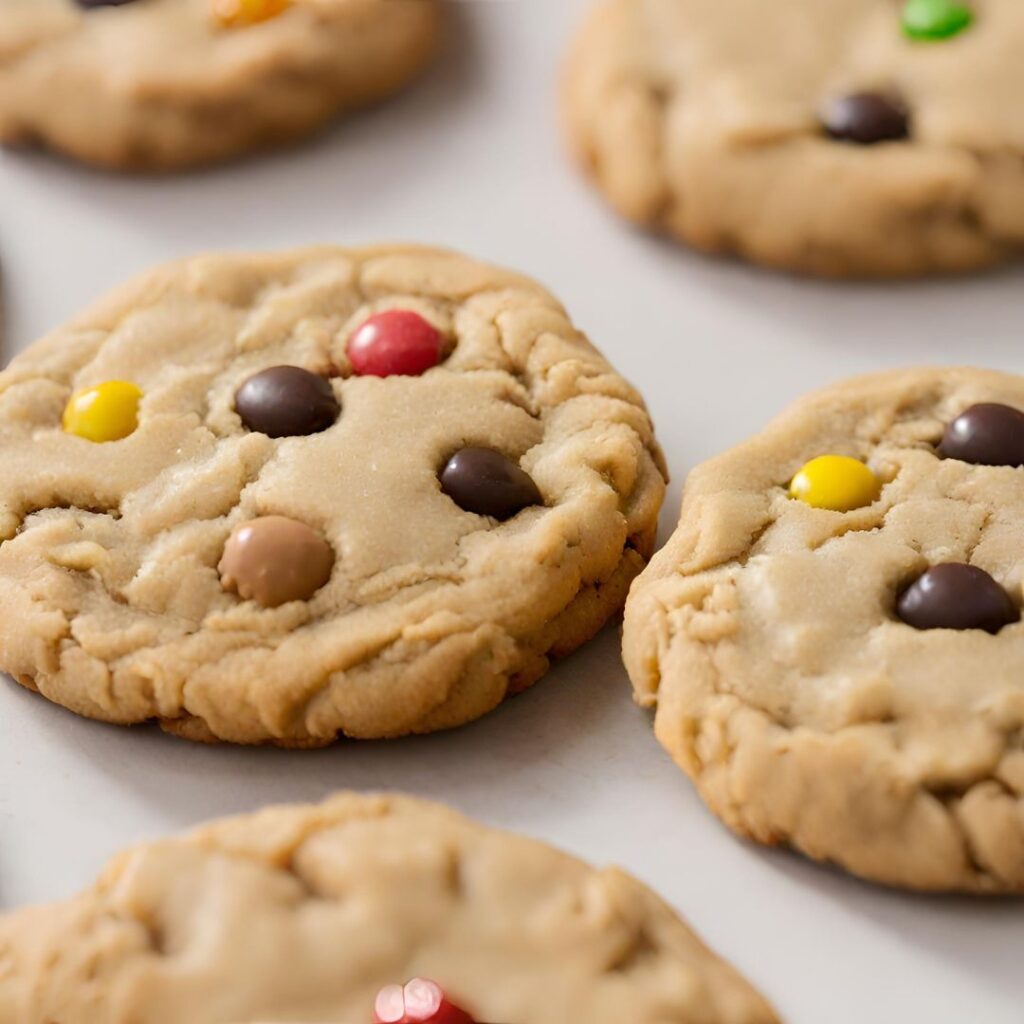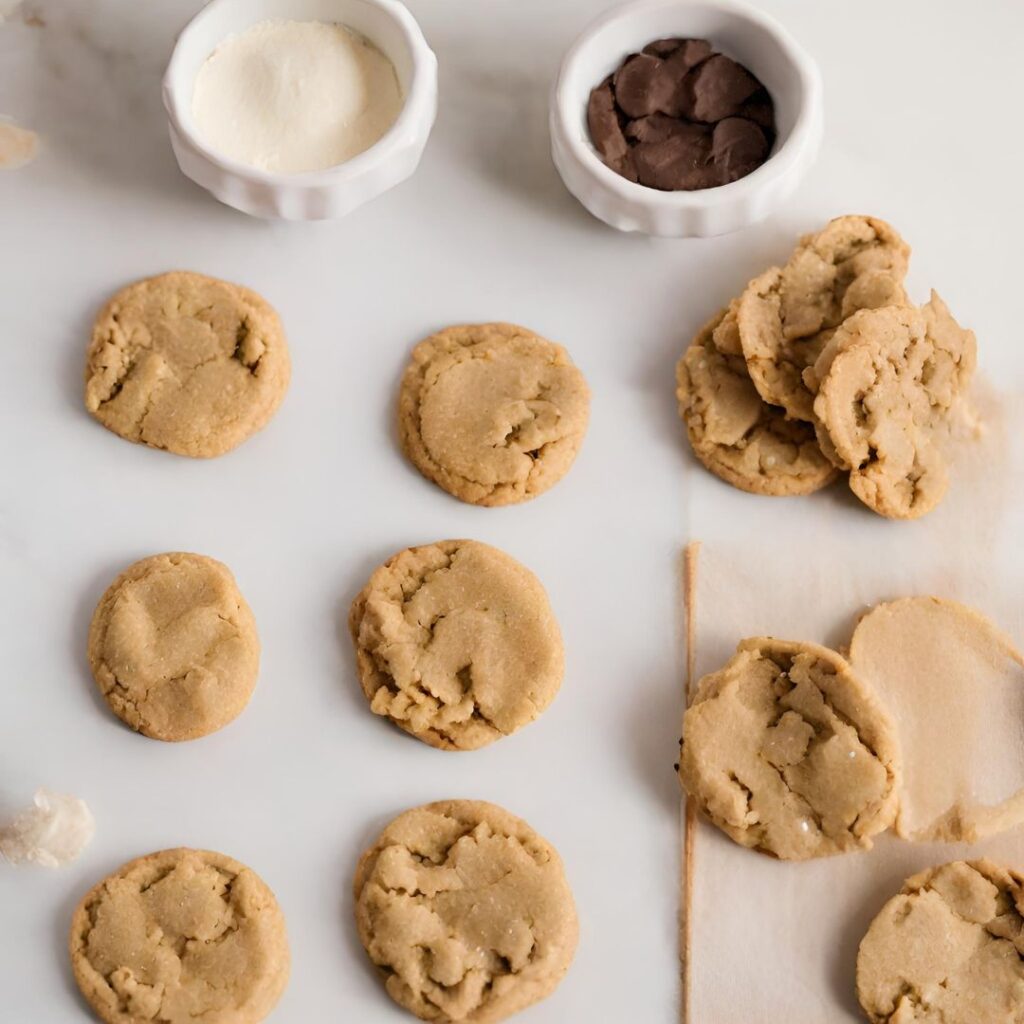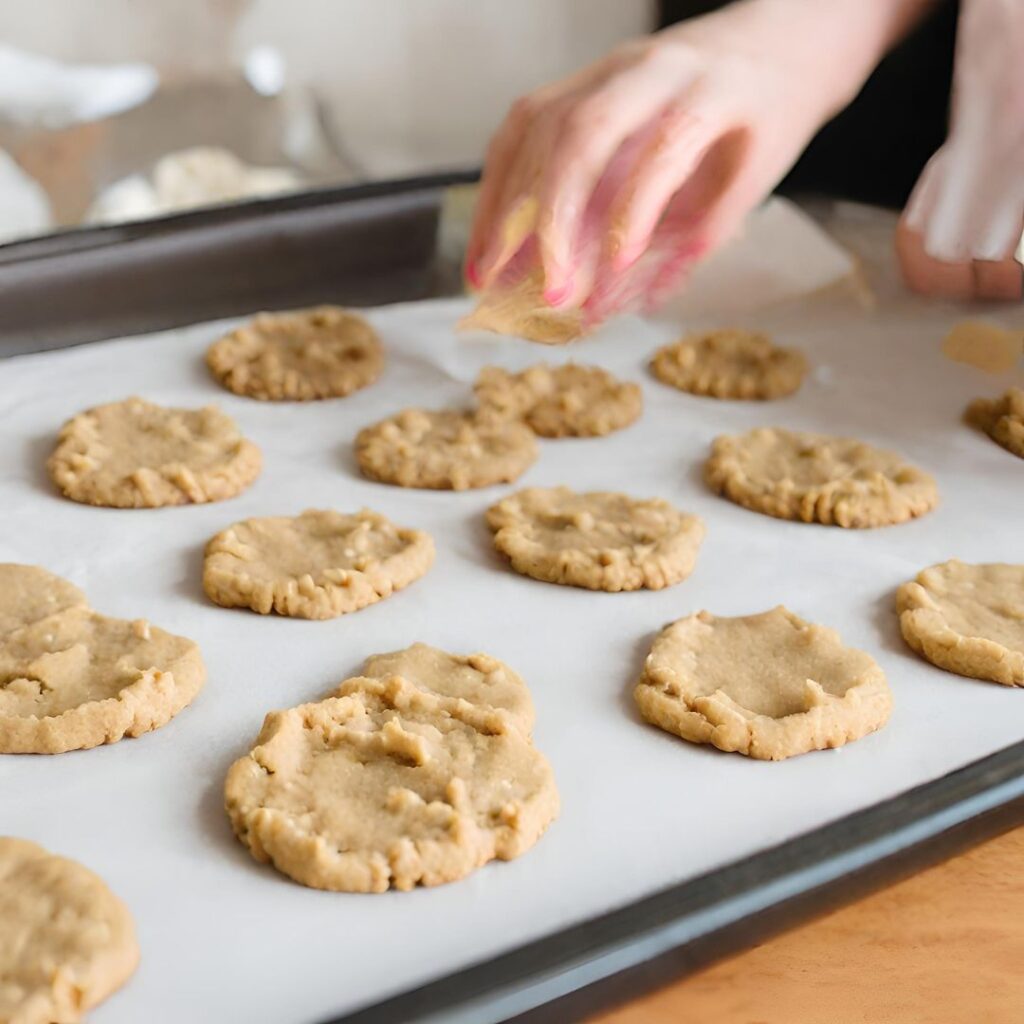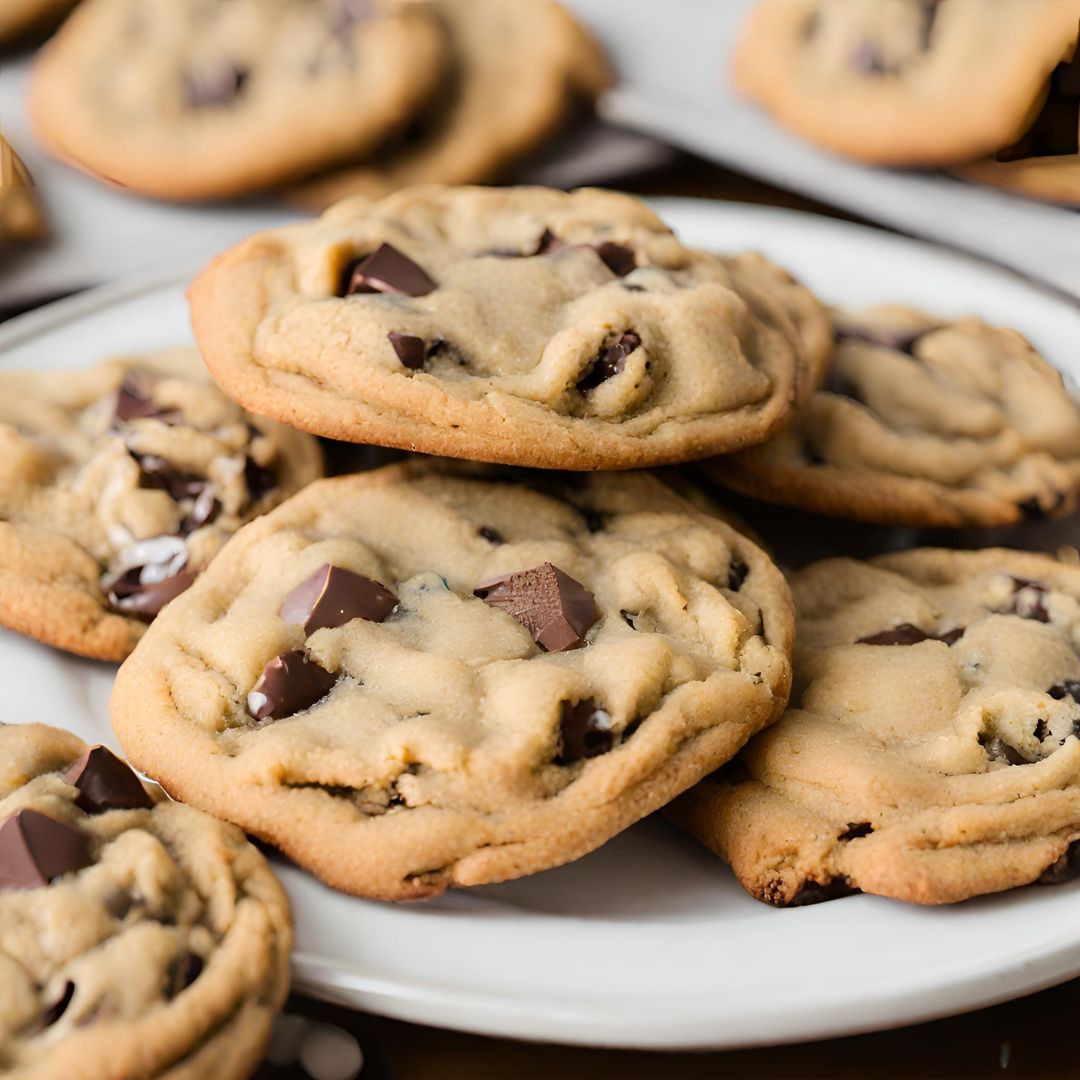I. Introduction
Cookies, those delectable treats that satisfy our sweet tooth and evoke nostalgic memories, come in a variety of textures, from the crisp and crunchy to the soft and chewy. While personal preferences vary, chewy cookies hold a special place in the hearts of many cookie lovers.
This article delves into the science behind chewy cookies, exploring the factors that contribute to their delectable texture and providing tips and techniques for achieving that perfect chewiness every time.
II. The Science Behind Chewy Cookies

Chewy cookies are characterized by their soft and pliable texture, with a slight resistance to the bite. This unique texture is the result of a delicate balance between moisture, fats, sugars, and leavening agents in the cookie dough.
Moisture Content:
A key factor in achieving a chewy texture is the moisture content of the dough. Cookies with higher moisture content tend to be chewier, while drier cookies are more likely to be crisp.
Fats:
The type and amount of fats used in the cookie dough also play a significant role in determining texture. Butter, with its high water content and rich flavor, is a popular choice for chewy cookies.
Sugars:
The type of sugars used in the cookie dough is crucial for achieving the desired texture. Brown sugar, with its higher moisture content, contributes to chewiness, while white sugar adds sweetness and promotes browning.
Leavening Agents:
Leavening agents, such as baking soda and baking powder, are responsible for creating air pockets in the cookie dough, which contributes to a soft and chewy texture.
Understanding the interplay of these factors is essential for achieving the perfect balance of chewiness in your cookies.
III. The Role of Ingredients in Chewy Cookies

Beyond the science, the specific ingredients used in the cookie dough significantly impact the texture. Here’s how different ingredients influence chewiness:
Types of Sugars:
The ratio of brown sugar to white sugar is critical for achieving the desired texture. Brown sugar, with its higher moisture content, contributes to chewiness, while white sugar adds sweetness and promotes browning. A higher proportion of brown sugar generally results in chewier cookies.
Fats:
The type of fat used in the cookie dough significantly impacts texture. Butter, with its high water content and rich flavor, is a popular choice for chewy cookies. Shortening, on the other hand, produces a more crumbly, less chewy cookie.
Eggs and Leavening Agents:
Eggs contribute moisture and structure to the dough, while leavening agents create air pockets. Balancing these ingredients is essential for achieving a chewy texture.
IV. Baking Techniques for Chewy Cookies
Baking techniques play a crucial role in achieving chewy cookies. Here are some key tips:
Oven Temperature:
Baking at a lower temperature for a longer period allows the cookies to cook evenly without overcooking the edges, resulting in a chewy texture.
Baking Time:
Overbaking can lead to dry and crispy cookies. Follow the recommended baking time closely and check for doneness by observing the edges of the cookies.
Cookie Size:
Larger cookies tend to be chewier than smaller ones, as they take longer to bake through.
Resting the Dough:
Chilling the dough before baking allows the moisture to distribute evenly and the gluten to relax, resulting in a chewier texture.
Proper Measuring:
Using measuring cups and spoons accurately ensures the correct balance of ingredients, which is crucial for achieving the desired texture.
V. Tips for Making Chewy Cookies

In addition to the baking techniques mentioned above, here are some additional tips for making chewy cookies:
Use Cornstarch or Pudding Mix:
Adding a small amount of cornstarch or pudding mix to the dough can help retain moisture and enhance chewiness.
Chill the Dough:
As mentioned earlier, chilling the dough is essential for a chewy texture.
Use Specific Cookie Sheets and Pans:
Dark-colored cookie sheets and pans absorb more heat, resulting in chewier cookies.
VI. FAQs
Here are some frequently asked questions related to making chewy cookies:
1. What type of sugar is best for chewy cookies?
Brown sugar, with its higher moisture content, is better for chewy cookies.
2. What type of fat is best for chewy cookies?
Butter is the preferred fat for chewy cookies due to its high water content and rich flavor.
3. How do I prevent my cookies from spreading too much?
Chilling the dough and using a higher proportion of brown sugar can help prevent excessive spreading.
4. Can I make chewy cookies without eggs?
Yes, there are eggless chewy cookie recipes available.
5. How do I store chewy cookies to maintain their texture?
Store chewy cookies in an airtight container at room temperature.
Flavor Variations for Chewy Cookies
The classic chewy chocolate chip cookie is a crowd-pleaser, but the world of chewy cookies offers a vast array of flavor combinations. Here are a few ideas to inspire your next chewy cookie adventure:
Oatmeal Raisin: A timeless classic, chewy oatmeal raisin cookies are packed with wholesome oats, plump raisins, and warm spices.
Peanut Butter: Indulge in the rich, nutty goodness of chewy peanut butter cookies. For a decadent twist, add chocolate chips or peanut butter chips.
Double Chocolate: For chocolate lovers, chewy double chocolate cookies are a dream come true. Combine chunks of dark chocolate with cocoa powder for an intense chocolate experience.
White Chocolate and Macadamia Nut: Elevate your chewy cookie experience with white chocolate and macadamia nuts. The buttery macadamia nuts complement the sweetness of white chocolate perfectly.
Snickerdoodle: Capture the essence of a cozy bakery with chewy snickerdoodle cookies. Roll the dough in cinnamon and sugar for a delightful combination of flavors and textures.
Storage and Shelf Life
To preserve the chewiness and freshness of your cookies, proper storage is essential. Here are some tips:
Airtight Container: Store chewy cookies in an airtight container at room temperature. This prevents moisture loss and maintains the desired texture.
Room Temperature: Storing chewy cookies at room temperature allows them to retain their softness and chewiness. Avoid refrigerating them, as this can make them dry and crumbly.
Shelf Life: Freshly baked chewy cookies can last for up to 3 days when stored properly. For longer storage, freeze them in an airtight container for up to 3 months. Thaw them at room temperature before enjoying.
Serving Suggestions
Chewy cookies are versatile treats that can be enjoyed in a variety of ways:
Classic Pairings: A glass of milk or a scoop of ice cream is the perfect accompaniment to chewy cookies.
Dessert Ingredients: Crumble chewy cookies over ice cream or yogurt for a delightful texture and flavor contrast.
Gifting: Chewy cookies make thoughtful gifts for friends, family, and neighbors.
Creative Concoctions: Use chewy cookies as an ingredient in other desserts, such as chewy cookie bars or chewy cookie ice cream sandwiches.
Read Also:
Conclusion
Creating chewy cookies is an art that requires a balance of ingredients, techniques, and a touch of baking magic. By understanding the science behind chewiness and following the tips and techniques provided, you can consistently bake chewy cookies that will satisfy your sweet tooth and leave you craving more.
So, grab your ingredients, preheat your oven, and embark on a chewy cookie adventure. With a bit of practice and experimentation, you’ll be baking chewy cookies that rival those found in your favorite bakery.

